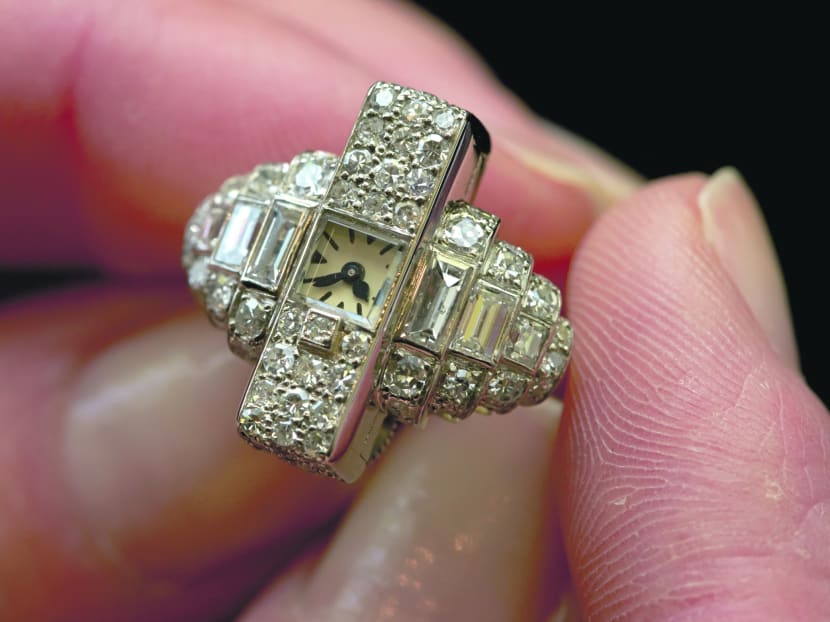Setting the Cartier precedent
LONDON — Peak tourist season in Paris. The boulevards are a-brim with people all squinting at their smartphones and asking Google Maps to guide them. Watching this phenomenon is fun, for the Parisians become hilariously enraged when their route is blocked by some bumbag-wearing iPhone‑waver — but it also demonstrates why the 21st-century’s most powerful technology companies are racing to build something more elegant.

An Art Deco platinum ring watch made by Cartier around 1937. Photo: Reuters
LONDON — Peak tourist season in Paris. The boulevards are a-brim with people all squinting at their smartphones and asking Google Maps to guide them. Watching this phenomenon is fun, for the Parisians become hilariously enraged when their route is blocked by some bumbag-wearing iPhone‑waver — but it also demonstrates why the 21st-century’s most powerful technology companies are racing to build something more elegant.
Apple, Samsung, Google and the rest are competing to create the defining piece of “wearable technology”. This might be sported on the face, as per Google Glass; or the wrist, like Samsung’s Gear or Apple’s soonish-to-be-announced smartwatch. Or just maybe it will be worn somewhere else entirely — in a spot nobody has thought of yet.
What seems likely, though, is that carrying a device that must be taken from a pocket and then held up in front of your face to use will eventually seem quaintly anachronistic. Of course, some people think that’s bunkum.
A century or so ago, they said the same thing about the pocket watch. As Cartier’s in-house curator at 13 rue de la Paix observed with great pleasure, a French fashion journalist wrote in the ’20s “that wearing a watch on your wrist was weird, un-chic, and un-masculine — and that it would never really catch on”.
In 1904, Louis Cartier gave a Brazilian pilot named Alberto Santos-Dumont a watch designed especially to be hands-free and visible at all times while flying. Its case contained lugs to which a strap was fixed and then looped around the wrist. This design, the Santos, has been claimed as the first modern wristwatch. However, only a few early adopters embraced it: Only eight of them were sold in 1911.
Then in 1913, Field Marshal Douglas Haig was given this 24-hour pocket watch to use in the field. By the time Louis Cartier designed the Tank watch in 1916 after seeing the first photographs of British tanks in action at the Somme, army officers had begun to wear “wristlets” — the better to co-ordinate offensives. But even the “wristlet” crept relatively slowly towards ubiquity.
An archive exhibition above the Cartier shop displays rarely seen designs from the first half of the last century — many of them made by Department S (for silver), a special team charged with creating beautiful, functional, modern bijoux. A lot of them incorporated watches: In 1939 the Prince of Nepal thought it would be a good idea to have one in his lighter, so he could tell the time while lighting up. And in 1933, a client in New York ordered a watch-enabled money-clip. Cartier also put watches in bottles, on keyfobs, on pencils and even on belt-buckles.
Had any of these designs — attractive as they are — made better intuitive sense than the wristwatch, then they might have become the template for the way we tell the time. But they didn’t. So just as the wristwatch eventually rendered the pocket watch obsolete, it seems likely that the smartphone will one day be comprehensively succeeded by the smartwatch (albeit with a Bluetooth earpiece as part of the deal). THE DAILY TELEGRAPH





